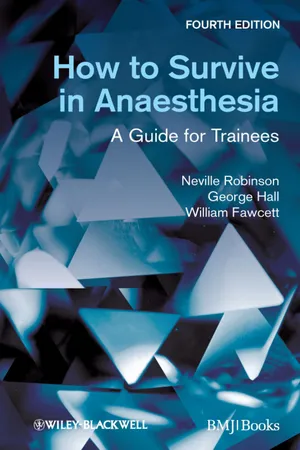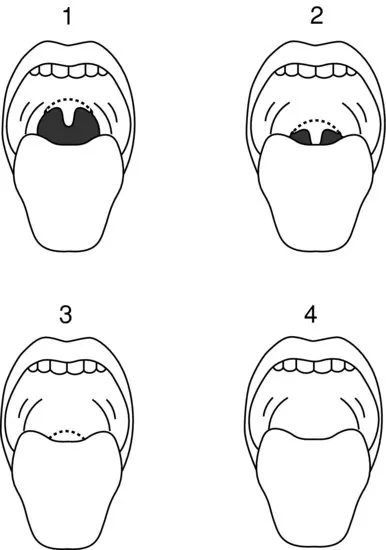
How to Survive in Anaesthesia
A Guide for Trainees
- English
- ePUB (mobile friendly)
- Available on iOS & Android
About this book
Anaesthesia can be daunting for the novice - not least because they often begin working singlehandedly within a few weeks.
How to Survive in Anaesthesia is a pocket sized book written by 3 authors who have nearly 90 years experience of anaesthesia between them. It covers basic aspects of airway and fluid management and equipment, followed by common emergencies. Finally it tackles all the common surgical specialties step by step. It is always practical, ever contemporary, frequently amusing. It provides safe and practical advice to not only help novices survive those first few months - but to enjoy them too.
How to Survive in Anaesthesia was written to answer the questions that newly qualified anaesthetists need answers to but may be too embarrassed to ask. Through three editions its popularity has gathered momentum across the globe. Now the fourth edition has been revised and updated, responding to changes in practice and new requirements. New features for this edition include:
- A new introduction on the theatre environment
- A new chapter on local anaesthetic toxicity
- The latest guidelines on intravenous fluids
- Updated information on airway procedures and equipment
Written in an easy, humorous style by leading anaesthetists who have over 90 years' experience between them, this book is the junior anaesthetist's gateway to sound authoritative advice on how to perform anaesthetics in real life. It will inspire confidence in any new doctor starting in the specialty.
Frequently asked questions
- Essential is ideal for learners and professionals who enjoy exploring a wide range of subjects. Access the Essential Library with 800,000+ trusted titles and best-sellers across business, personal growth, and the humanities. Includes unlimited reading time and Standard Read Aloud voice.
- Complete: Perfect for advanced learners and researchers needing full, unrestricted access. Unlock 1.4M+ books across hundreds of subjects, including academic and specialized titles. The Complete Plan also includes advanced features like Premium Read Aloud and Research Assistant.
Please note we cannot support devices running on iOS 13 and Android 7 or earlier. Learn more about using the app.
Information
- History
- Symptoms
- Examination
- anatomy and variants
- medical conditions
- specific assessment
- Mallampati scoring system
- thyromental distance
- sternomental distance
- other tests
- Congenital: rare
- Acquired
- traumatic: fractures of mandible and cervical spine
- infection: epiglottitis, dental or facial abscess
- endocrine: thyroid enlargement, acromegaly, obesity
- neoplasia: tongue, neck, mouth, radiotherapy
- inflammatory: ankylosing spondylitis, rheumatoid arthritis
- pregnancy
- Short immobile neck
- Full set of teeth, buck teeth
- High arch palate
- Poor mouth opening – less than three fingers gap between upper and lower teeth
- Receding mandible (may be hidden by a beard)
- Inability to sublux the jaw (forward protrusion of the lower incisors beyond the upper incisors)

- Grade 1: faucial pillars, soft palate and uvula visible
- Grade 2: faucial pillars, soft palate visible, but uvula masked by the base of the tongue
- Grade 3: soft palate only visible
- Grade 4: soft palate not visible
Table of contents
- Cover
- Title Page
- Copyright
- Dedication
- List of boxes
- List of figures
- List of tables
- Preface to the fourth edition
- Preface to the third edition
- Preface to the second edition
- Preface to the first edition
- Let's start at the very beginning …
- Part I: Nuts and bolts
- Part II: Crises and complications
- Part III: Passing the gas
- And finally …
- Index